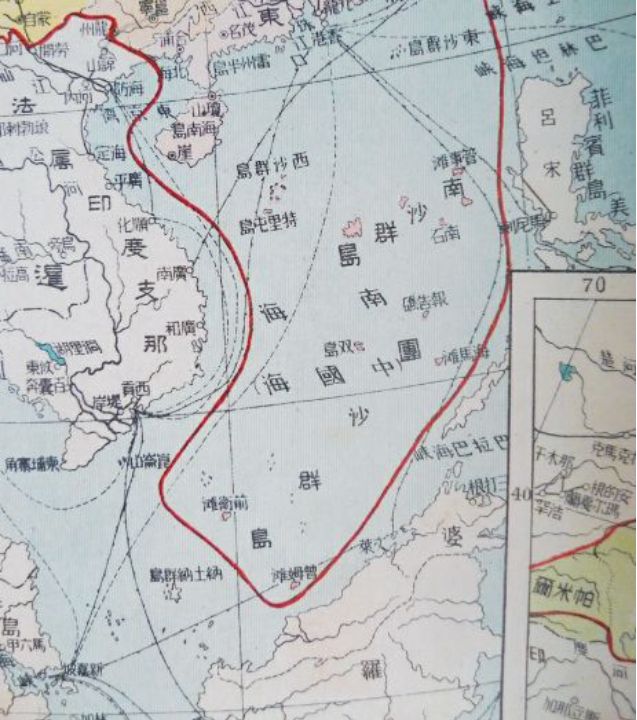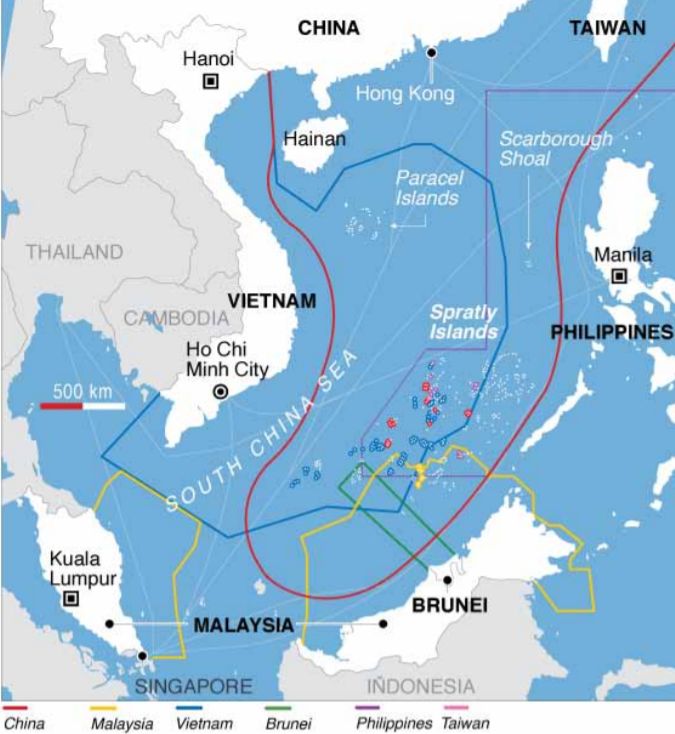South-East Asia between China and the US
A poll of more
than 1,000 Southeast Asian experts, analysts, and business leaders has laid
bare the concerns of a region trying to find its way amid the rise of China and
the decline of the United States’ influence.
On the one hand, many
in the region are wary of President Xi Jinping’s mission to reclaim for China
the centrality it enjoyed in East Asia before the imperial depredations by the
West and Japan in the 19th and early 20th
century. It is not just that China is aggressively challenging the maritime and territorial claims of Brunei, Indonesia,
Malaysia, the Philippines, and Vietnam in the South China Sea, through which
the majority of China’s seaborne trade passes. It is also that Mr. Xi’s call
for “Asian people to run the affairs of Asia” sounds like code for China
running Asia. As a Chinese foreign minister once told a gathering of the
ten-country Association of South-East Asian Nations (ASEAN): “China is a big country and [you] are small countries,
and that is just a fact” for details see at the end of the
following link.
On the other hand, while
ASEAN members welcome America as the dominant military power in the region to
counter China’s growing heft, they know that conflict would be disastrous for
them. South-East Asian diplomats did not loudly cheer the anti-China rhetoric
of President Donald Trump’s administration, which is unlikely to soften much
under Joe Biden. And no wonder. Many of the region’s governments are hostile to
democracy, and few see America’s political model as one to emulate.
A research paper by
the London School of Economics and Political Science stated
that the US still has to manage its relations with China, which extend far
beyond the regional canvas. The dilemma the US cannot escape is how to
integrate into the international system a rising power that will eat into
American predominance in the world, even if it will remain the preeminent power
for a long time to come. The instinct to attempt to snuff out the rising power
has to be resisted, even if such a strategy were possible. Washington has so
far managed this well, in spite of the pressures of domestic opinion from both
sides of the partisan divide. In Southeast Asia China has become economically
preeminent, and whatever China’s strategic missteps over the South China Sea
disputes, the United States will not displace China’s economic importance in
the region. The test for the United States is to manage its relations with
China in Southeast Asia as elsewhere without reflecting China’s
self-righteousness with its own sense of exceptionalism.
Underneath map of the
South China Sea drawn by Bai Meichu (who probably never went to sea in his life) for his New Atlas of China’s Construction in 1936.
James Shoal (off Borneo), Vanguard Bank (off Vietnam), and Seahorse Shoal (off
the Philippines) are drawn as islands, yet in reality, they are underwater
features. Almost none of the islands that Bai drew in the central and southern
parts of the South China Sea actually:

Yet today, China is
too close to South-East Asia and already too mighty to turn against.
It is by far South-East Asia’s biggest trading partner and its second-biggest
investor, behind Japan. ASEAN’s prosperity is as bound to China as its supply
chains are. And as Sebastian Strangio, a perceptive observer of the region,
points out in a new book, “In
the Dragon’s Shadow,” South-East Asia has a powerful stake in China’s
growth and stability: historically, turmoil in China has spread instability
southward.
So, how not to get caught
between the two giants? The region’s strategists remind themselves that things
have been worse when it comes to great-power rivalry. At the height of the cold
war, bloody conflict in Indo-China and communist insurgencies elsewhere
threatened to reduce South-East Asian autonomy to zero. Those concerns, and the
need for a mechanism to manage their mutual mistrust, were catalysts for
Indonesia, Malaysia, the Philippines, Thailand, and Singapore to form ASEAN
more than 50 years ago. And today? At least, the strategists say, with black
humor, China and the United States have not carved up the region between them.
As for 2021, the
region’s experience in managing great-power rivalry will come to the fore.
South-East Asia has lived under China’s armpit for millennia, and ASEAN’s
member countries have dealt with the American presence since the second world
war. The approach will be to “hedge, balance and bandwagon” between the two,
says Bilahari Kausikan, formerly Singapore’s top
diplomat.
Students of
international relations are usually taught that only one of these three
approaches is possible at any time. Yet pragmatic South-East Asians, Mr. Kausikan argues, have a knack for doing all three. One
example is 2021: just as the Philippines under President Rodrigo Duterte will
keep wooing Mr. Xi over Chinese investment, expect a rapid improvement in
once-strained military ties with America. South-East Asia in 2021 will also do
more to invite other powers, notably Japan, South Korea, Australia, and India,
to share in both regional prosperity and security.
Hedging, balancing,
and bandwagoning rests, admittedly, on one big
assumption: that neither America nor China really intends to decouple their two
economies entirely. That calculation is probably right, and even if hard-nosed
competition and negotiation between the two powers reconfigure global supply
chains, South-East Asians still intend to profit from that.
Even so, it is a
gamble, and other risks loom. Not the least of them is maintaining ASEAN
solidarity—China has already tried to drive a wedge into the organization by
turning Cambodia and Laos, for now, into client states. Mr. Xi’s increasing
claims to speak for all ethnic Chinese overseas, including 30m South-East
Asians of Chinese ancestry, raise the risk of nativist demagogues using
anti-China feelings to whip up ethnic hatred.
Perhaps the most
nail-biting risk of all is of some unintended clash
between China and America over the South China Sea. In the event of
military conflict, the hedge, the balance, and the bandwagon will not get
anyone very far at all.

For updates click homepage here